Drones can take real estate photography to the next level. In this article, we’ll cover how to shoot real estate drone photography.
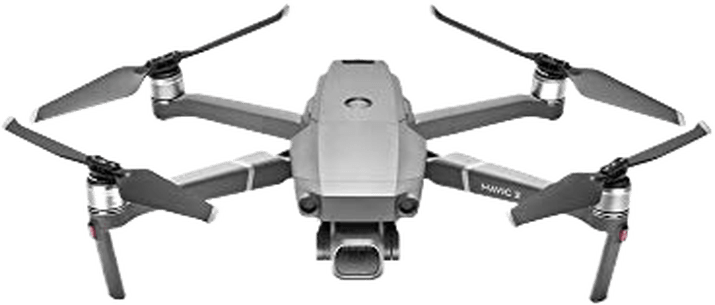
Real estate photography is the photography of properties that are up for sale or rent. The goal of real estate photography is to create content for advertising material.
Real estate drone photography makes use of a drone to take striking shots of properties from the air.
There a several reasons to shoot real estate drone photography. Taking photos from high up gives a viewer a good look at a house and surrounding environment.
Quality real estate drone photography can enhance the chance of a sale. By using a drone in real estate photography, people can get a clearer idea of a property.
With improved drone technology, plenty of people take advantage of drones for creative photography.
There are two ways to achieve real estate photography with the help of a drone.
One way is to hire a professional drone pilot.
Prices vary, but $150 appears to be the standard starting price for hiring a drone pilot.
A drone pilot will supply all the required equipment for a session. They will also know the rules and regulations for safe drone usage in the field. They may or may not include image editing in their price, so always ask.
Before hiring a drone pilot, review their previous work and customer reviews.
It’s also important to ask for evidence that a pilot has the appropriate licencing and insurance.
The second way to shoot real estate drone photography is to do it yourself.
Be aware that flying a drone takes practice to get right.
There are also rules for when and where a drone can be flown. Breaking these rules can result in a dangerous situation and heavy penalties.
Make sure you know the drone usage laws in the immediate area before taking off.
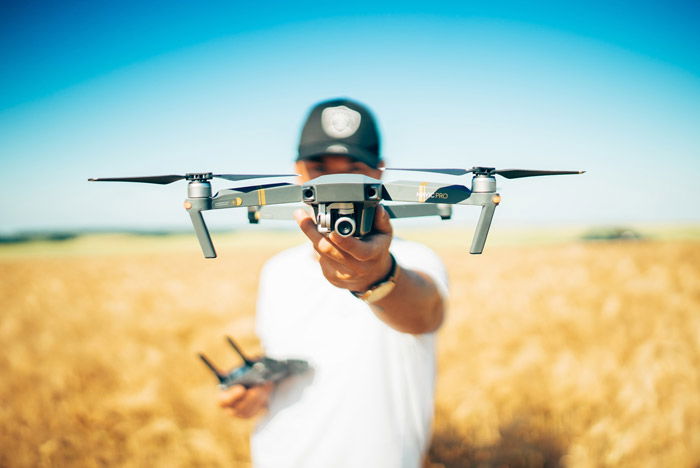
The key ingredient for drone photography is a camera-equipped drone.
Doing real estate drone photography yourself used to be very expensive. But as drone photography becomes more popular, it has become more accessible too.
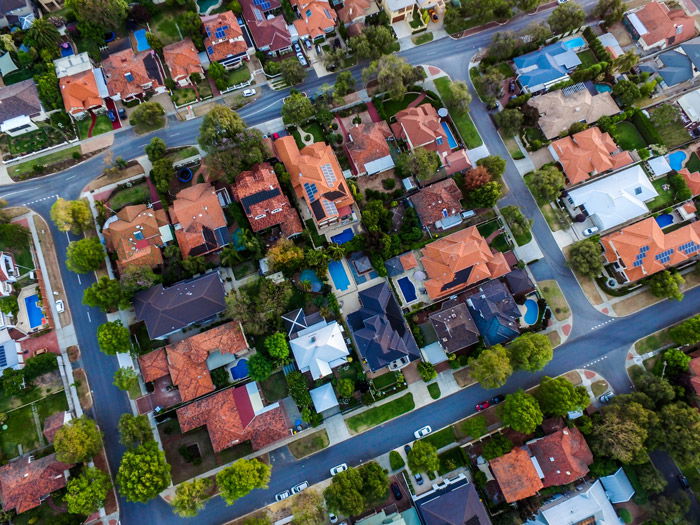
There are a few aspects to look out for when selecting a drone:
A drone with a high-resolution camera is a must (think around 12 megapixels and up).
For the best video drones, 4K video with a good frame rate (30 frames per second+) is important.
Many drones come with a built-in gimbal. This helps maintain a smooth flight and stability for sharp images.
Range dictates how far a drone can travel from your controls. A short-range can be a hassle, aim for a range of at least a mile to be on the safe side.
The flight time of the average professional drone is around 30 minutes. While some professional drones operate on 20 minutes, any extra time you can afford is a plus.
Drones like the DJI Phantom 4 Pro are good for professional real estate photography.
The DJI Mavic 2 Pro is considered one of the best video drones available. The DJI Inspire 2 is also a good option, but it’s more optimised for other professional applications.
For a more extensive list of different drones, check out our article here.
Entry-level camera drones can be quite cheap.
But the old adage you get what you pay for is as true as ever in drone photography.
The cheapest drones that provide acceptable quality for aerial photography are then Phantom 3 and the Mavic Air from DJI. However, both are discontinued now.
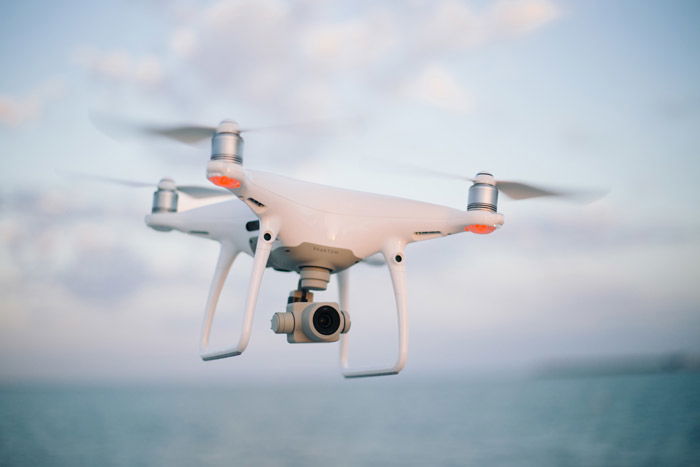
OK, so you’ve got your drone, and you’re ready to start practising. Here are a few things you need to know to get off the ground.
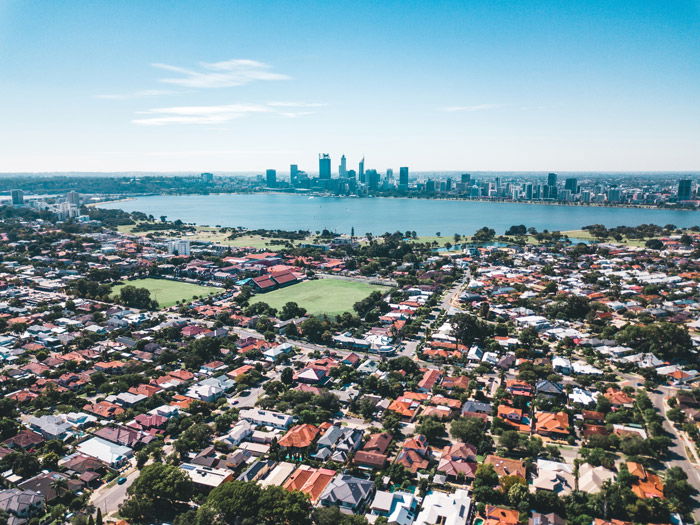
There are several golden rules to flying a drone;
In addition, there are drone operation rules that vary from country to country and even state to state.
Check your local rules before flying, and be sure to obtain proper training and flight clearance if required.
It’s vital that you familiarize yourself with the processes and the laws of the intended flying location.
Consult with your countries’ civil aviation authority for more info.
Piloting a drone can be a steep learning curve.
If you need guidance, there are many courses available to teach you the ins and outs of drone flight.
If you want to learn on your own, there is a wealth of information on the internet about operating drones.
Do a bit of research before you head out in the field. Practice climbing, hovering and landing while keeping the drone close to the ground.
Once you build up confidence, start operating higher up. You can then start using the camera to take photos in-flight.
Drone flying is a mix of coordination and spatial awareness. Take it slow and you’ll be a much more competent pilot.
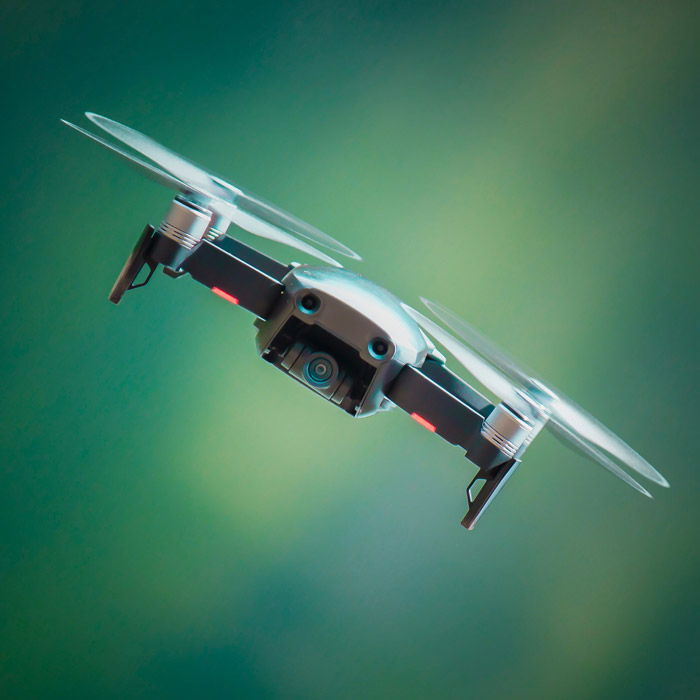
Once you’ve got the hang of drone photography, you can get into photographing real estate.
Often, this requires obtaining licenses and permissions to operate a drone business.
Regulations for real estate drone photography vary from country to country too.
Do some research into your country’s rules and regulations for operating a drone for business purposes.
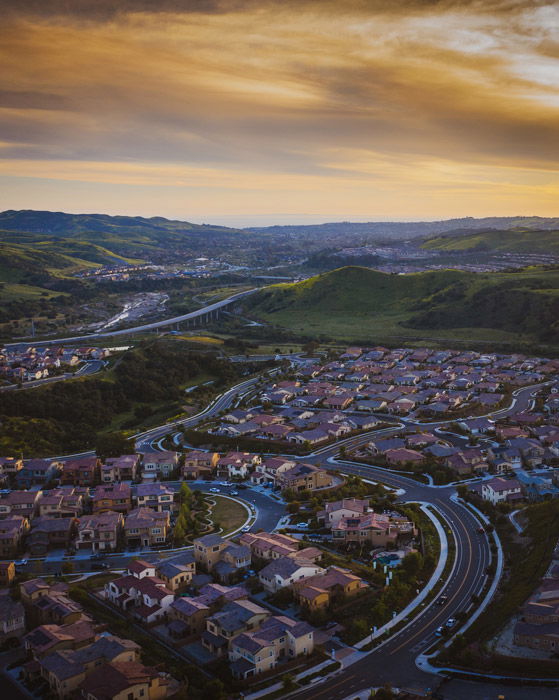
Once you have a license, try and tee up with a real estate agent. Or photograph properties you or friends and family own.
You want to build up a solid body of work to present to future clients.
Once you have a quality portfolio, you might want to start charging people for your services.
Real estate drone photography prices seem to start at about $150. For exact numbers, research services providing drone photography in your area.
Here are some tips for creating practical and eye-catching real estate drone photography.
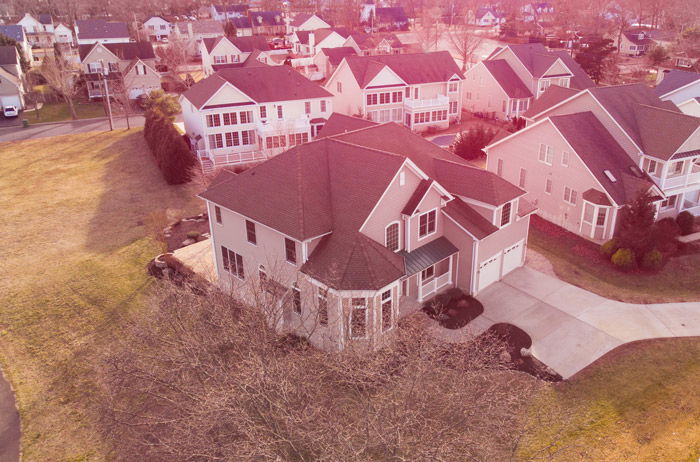
Real estate images look better in nice weather. Plus, calm clear days are less of a hazard for operating drones.
If you can, have a look at the weather forecast and plan your shoot accordingly.
Potential renters and buyers look for facilities as well as houses. For example, nearby parks or cafes add to the appeal of a property.
Try including facilities in your real estate drone photography.
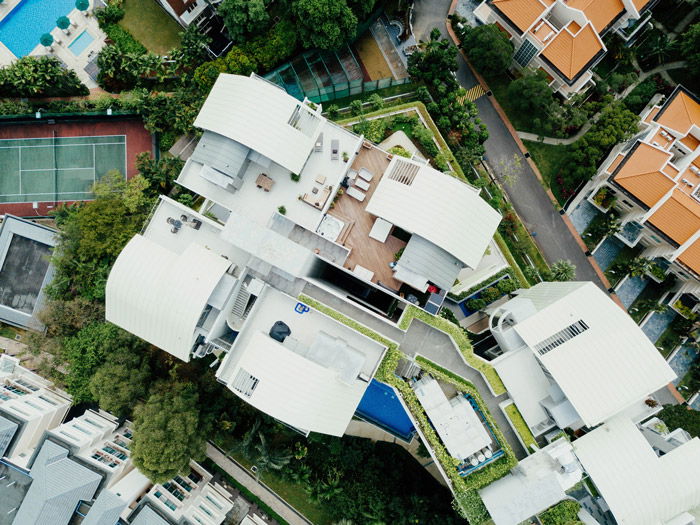
Buyers and renters want to know what kind of neighbourhood they might be moving into.
Take advantage of the altitude of the drone to include appealing aspects of a location.
If the property is near the bush, make sure you capture images that convey that environment.
If the property is suburban, take plenty of photos of the neighbourhood layout from above.
The high vantage point of the drone is great for squeezing the details of a property into a single image.
If there is a pool or a nice garden, take plenty of angled shots to depict them and the house together.
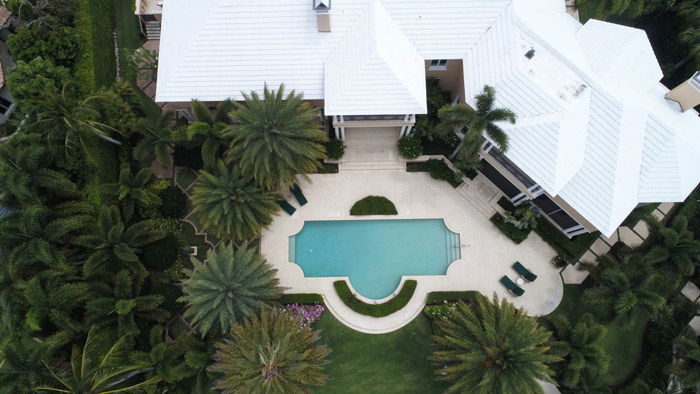
Although drone photography is a new and exciting field, the basic tenants of photography still stand. Getting the best drone photos is doesn’t only depend on the drone. The drone photographer is equally, if not more important.
Drone pilots often take flight training just to get as comfortable with the drone as possible. This ensures that they can concentrate on the drone photos more since flying becomes instinctive.
Principles of ground-level photography remain important in the air. Getting a great composition in aerial photography can be quite hard, for example. Try and incorporate elements like leading lines, the rule of thirds, color, contrast, pattern and diagonals to appeal to a viewer’s eye.
Setting your exposure might also not be the easiest thing. On many drones, you can’t set the aperture manually, or at all, because the drone doesn’t have one. Getting the perfect shot with just two variables of the exposure triangle could seem easy. But actually, you still have to work for it quite a bit.
Real estate drone photography creates compelling imagery.
But make sure you take plenty of photographs at different angles to ensure you get that perfect shot.
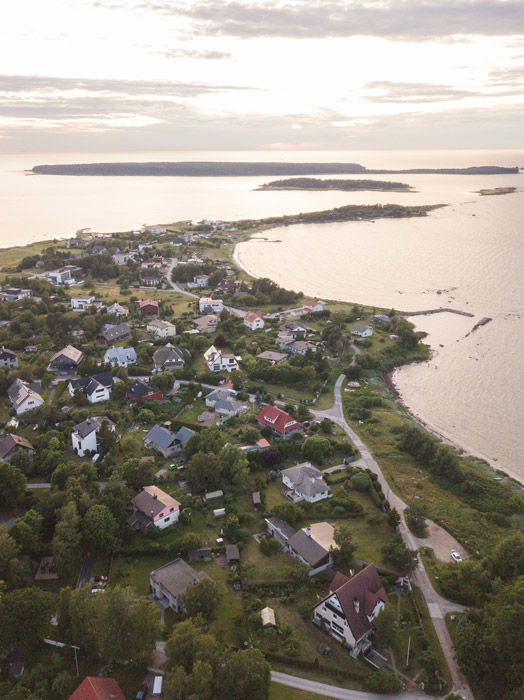
Combined with real estate photography, the use of drones lends a unique perspective to a property.
By hiring a drone pilot or doing the flying yourself, the reach of real estate photography is expanded to the skies!
Don’t forget to capture some landscape shots whilst your out and about! For all the know-how, check out our Simply Stunning Landscapes course!